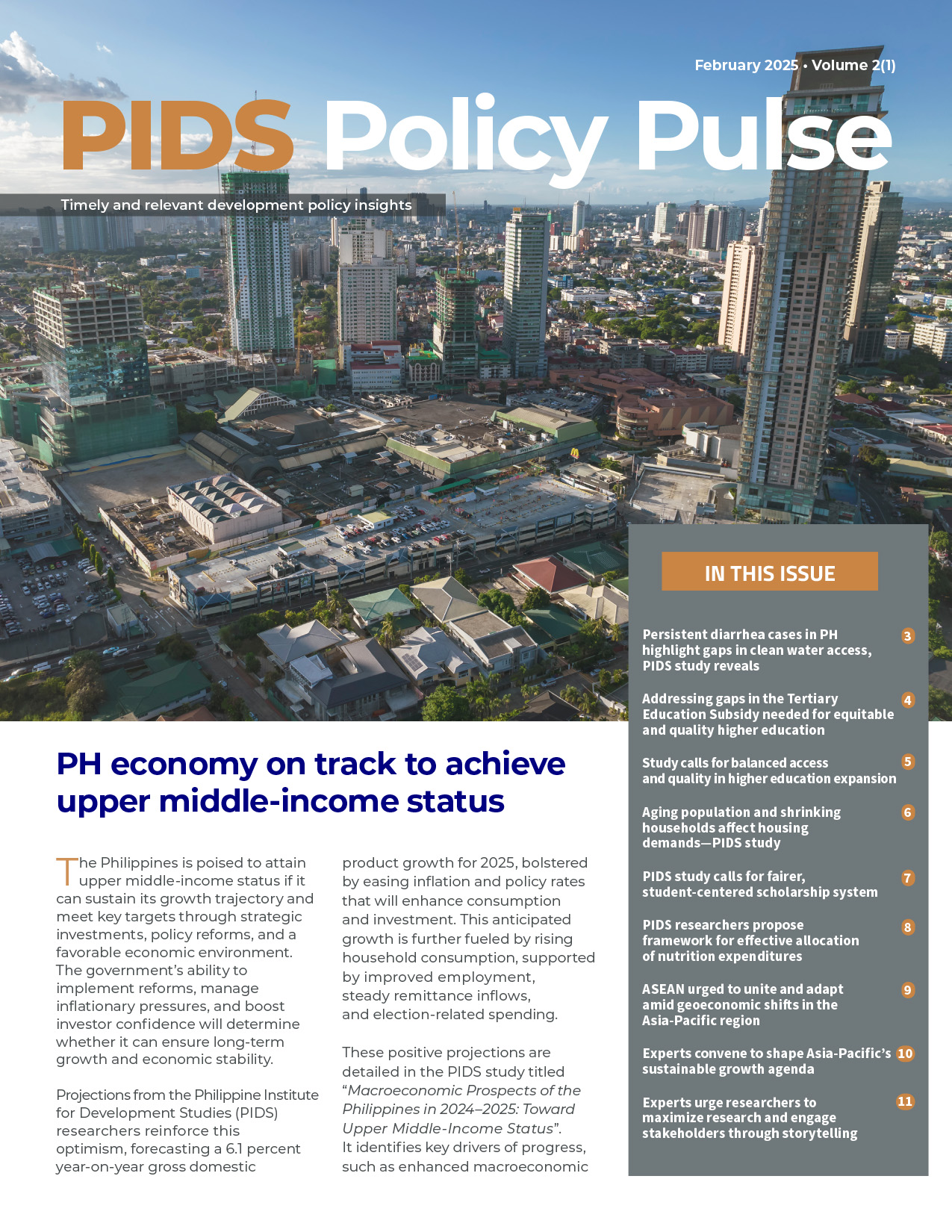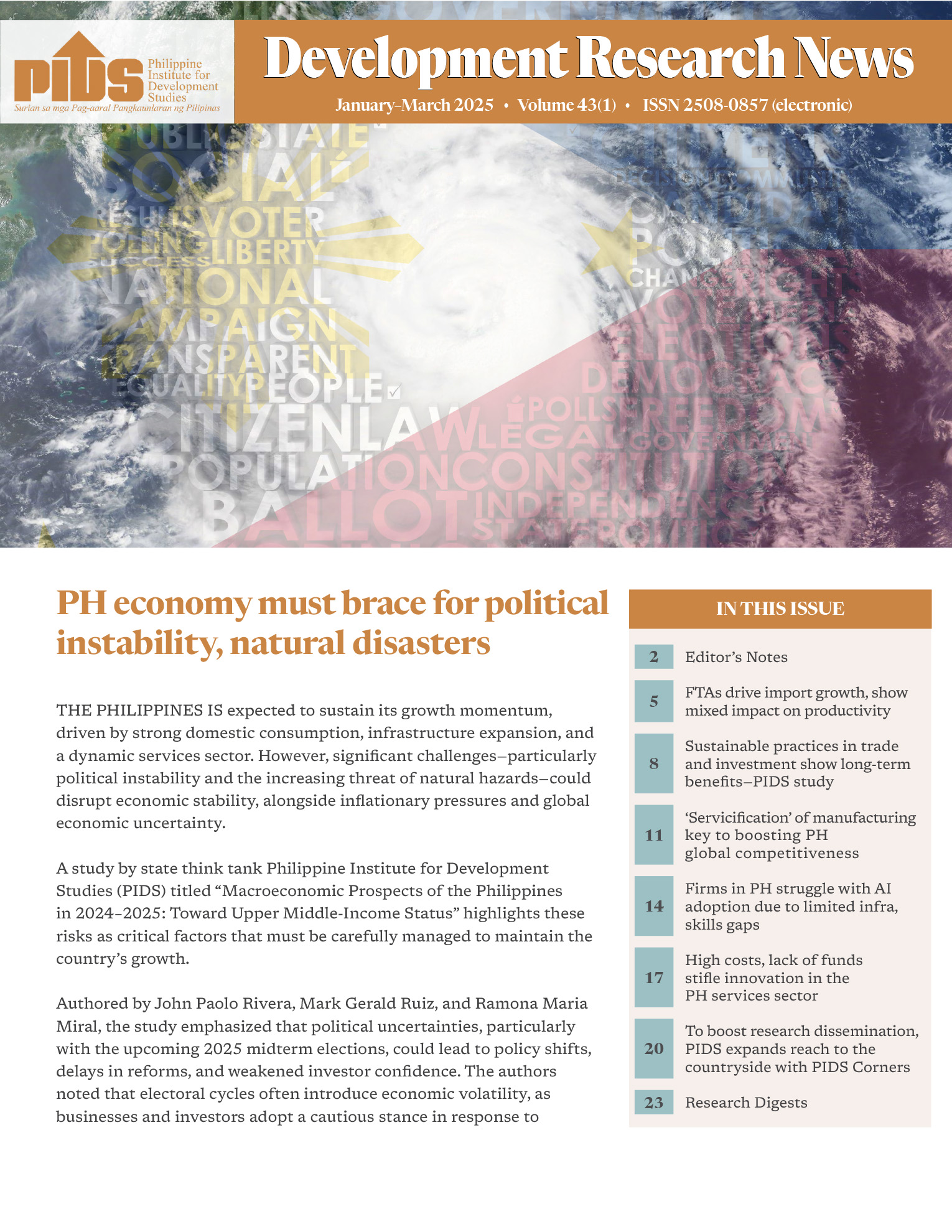The national government may review its inflation targets following the rebasing and methodological changes implemented in the Consumer Price Index (CPI), according to the National Economic and Development Authority (Neda).
On the sidelines of the Socioeconomic Report briefing on Tuesday, Neda Undersecretary for Planning and Policy Rosemarie G. Edillon said the inflation target of 2 percent to 4 percent is still based on a CPI that is based in 2006 and a different methodology.
Edillon said once the Philippine Statistics Authority releases the “backtracked” version of the data, the government can start the review of the inflation targets.
“We will be reviewing the targets once we receive the backtracked data because we have to see the trends,” Edillon told the BusinessMirror.
Apart from rebasing the CPI to 2012, the PSA also used chaining which can pave the way for an improved method of computing the country’s GDP.
The chained volume measure (CVM) is a means to compute economic growth using chained prices. The formula used to compute GDP in chained prices is not dependent on an assigned base year, which is now being used to compute GDP in constant prices.
When using chained prices, the base year cancels out in the formula and only the constant and current prices will be able to affect the outcome.
The proposal to use CVM was broached as far back as 2008 by then Philippine Institute for Development Studies visiting Senior Fellow Jesus Dumagan, which he said, could prevent anomalies in official data.
In a study, titled “Avoiding Anomalies of GDP in Constant Prices by Conversion to Chained Prices: Accentuating Shifts in Philippine Economic Transformation,” Dumagan said the CVM has already been recognized by the United Nations Statistics Division as a more superior way of measuring economic performance.
Dumagan also said the new method will also give a clearer picture of how big or small the actual contributions of the three main sectors of the economy are. With the new method, Dumagan said that real price changes and the evolution of industries would be more accurate.
Meanwhile, the Neda said keeping inflation in check is a priority of the government because of its dampening effect on Filipino’s incomes, which is central to reducing poverty.
Edillon said food inflation is particularly important since this accounts for half of the expenses of poor households. This is higher than the average which is about 30 percent of expenditures.
Among food items, the most important in poverty reduction is rice. Edillon said, however, that the only way to ensure this is to remove the quantitative restriction (QR) on rice.
The country’s QR has already expired in June 2017. The waiver, granted by the World Trade Organization (WTO), needs to be replaced with a specific tariff in order for the country to protect local farmers from the influx of imported rice.
“We need reform in the rice sector, making it more productive. For that, we think there is also a need for restructure or change in the sector and that is why we are pushing for reforms,” Edillon added.
Earlier, the Neda said it remains confident that the Philippines will be able to tarrify its QR on rice by June to meet its commitment to the WTO.
In a recent phone interview, Neda Assistant Secretary Mercedita A. Sombilla, who represents the oversight agency in the National Food Authority Council, told the BusinessMirror, despite the failure of the Senate to submit its version of the legislation for plenary hearing in this session.
Sombilla said in the last meeting, Neda was instructed by Sen. Cynthia A. Villar to draft another version of the bill which will be discussed in the next session slated for May 2018.
Sombilla said the tariffication of the QR on rice is the utmost priority of the government at this time. This is one measure that can ensure the country’s rice price issues this year will not recur next year.












